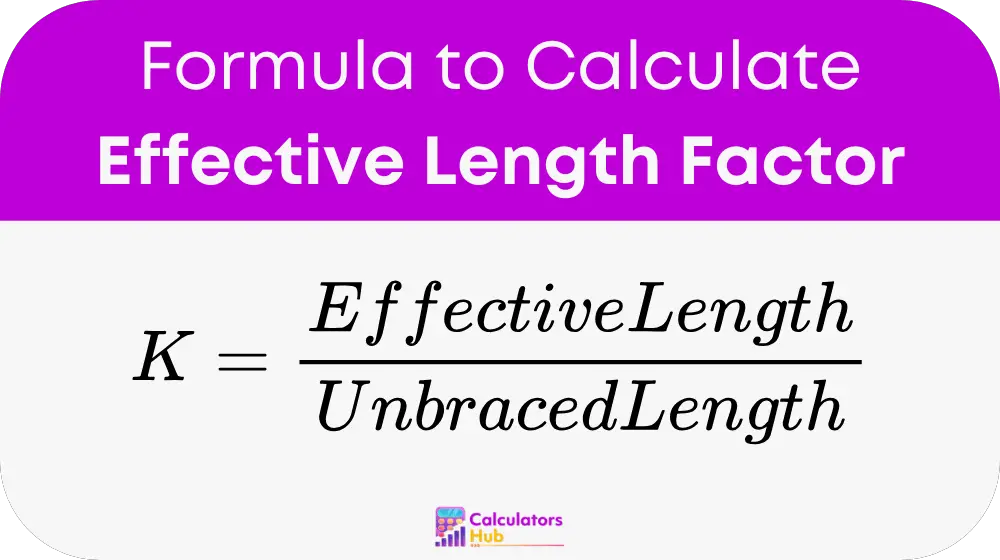Das Effektiver Längenfaktor-Rechner ist eine strukturell engineering tool that helps determine the effective length factor (K) for columns. This factor plays a crucial role in analyzing the buckling behavior of columns under axial loads. It adjusts the unbraced length of a column based on its end support conditions.
Dieser Rechner fällt unter die Structural Engineering Calculators category. Engineers, architects, and construction professionals use it to evaluate column Stabilität in buildings, bridges, towers, and other load-bearing structures. Knowing the correct K value helps ensure safe designs and efficient material usage.
formula of Effective Length Factor Calculator

Variablen:
- K:
Effective Length Factor — a dimensionless multiplier that adjusts the actual column length to account for how its ends are supported. - Effektive Länge:
The adjusted length of the column that reflects its susceptibility to buckling, in meters (m) or feet (ft). - Unbraced Length (L):
The real, unsupported length between two points of lateral support, in meters (m) or feet (ft).
Common Values of K (Based on End Conditions):
| Endbedingung | K Wert | Effective Length Expression |
|---|---|---|
| Both ends pinned (hinged) | 1.0 | Effective Length = L |
| Both ends fixed (fully restrained) | 0.5 | Effective Length = 0.5L |
| One end fixed, one end pinned | 0.7 | Effective Length ≈ 0.7L |
| One end fixed, one end free (cantilever) | 2.0 | Effective Length = 2.0L |
These values help estimate K without needing advanced calculations for simple cases.
Reference Table: Common K Values for Typical End Conditions
This reference table gives quick access to effective length factors for standard column setups. Engineers often use these approximations during initial design stages:
| Spaltentyp | Beschreibung | K-Faktor | Notizen |
|---|---|---|---|
| Simple Pinned-Pinned Column | Hinged at both ends | 1.0 | Most common assumption |
| Fixed-Fixed Column | Fully restrained at both ends | 0.5 | Most stable configuration |
| Fixed-Pinned Column | One fixed, one hinged | 0.7 | Offers intermediate stability |
| Cantilever (Fixed-Free Column) | Fixed at one end, free at other | 2.0 | Least stable — doubles length |
Using this table can save Zeit when designing or reviewing simple structural systems.
Example of Effective Length Factor Calculator
Szenario:
An engineer is designing a vertical steel column that is fixed at the bottom und free at the top, like a cantilever.
Step 1: Identify unbraced length
Let’s say the unbraced length is 4 Meter.
Step 2: Use the known K value
For fixed-free conditions, K = 2.0
Schritt 3: Die Formel anwenden
K = Effective Length / Unbraced Length
Damit
Effective Length = K × Unbraced Length
Effective Length = 2.0 × 4 = 8 Meter
Ergebnis:
The column behaves as if it were 8 Meter long for buckling purposes, even though its actual unbraced length is 4 meters.
Die häufigsten FAQs
A: The effective length factor adjusts for how a column's ends are supported. It directly impacts the critical buckling load. Using the wrong K value could lead to unsafe designs or overuse of materials.
A: In general practice, 0.5 is the lowest standard K value for fully restrained columns. Values below 0.5 can occur in complex frames, but these require detailed structural analysis and are not typical.
A: Start by identifying the support conditions of your column. Use the reference table for common scenarios. For complex structures, use structural analysis software or consult design codes such as AISC or Eurocode.